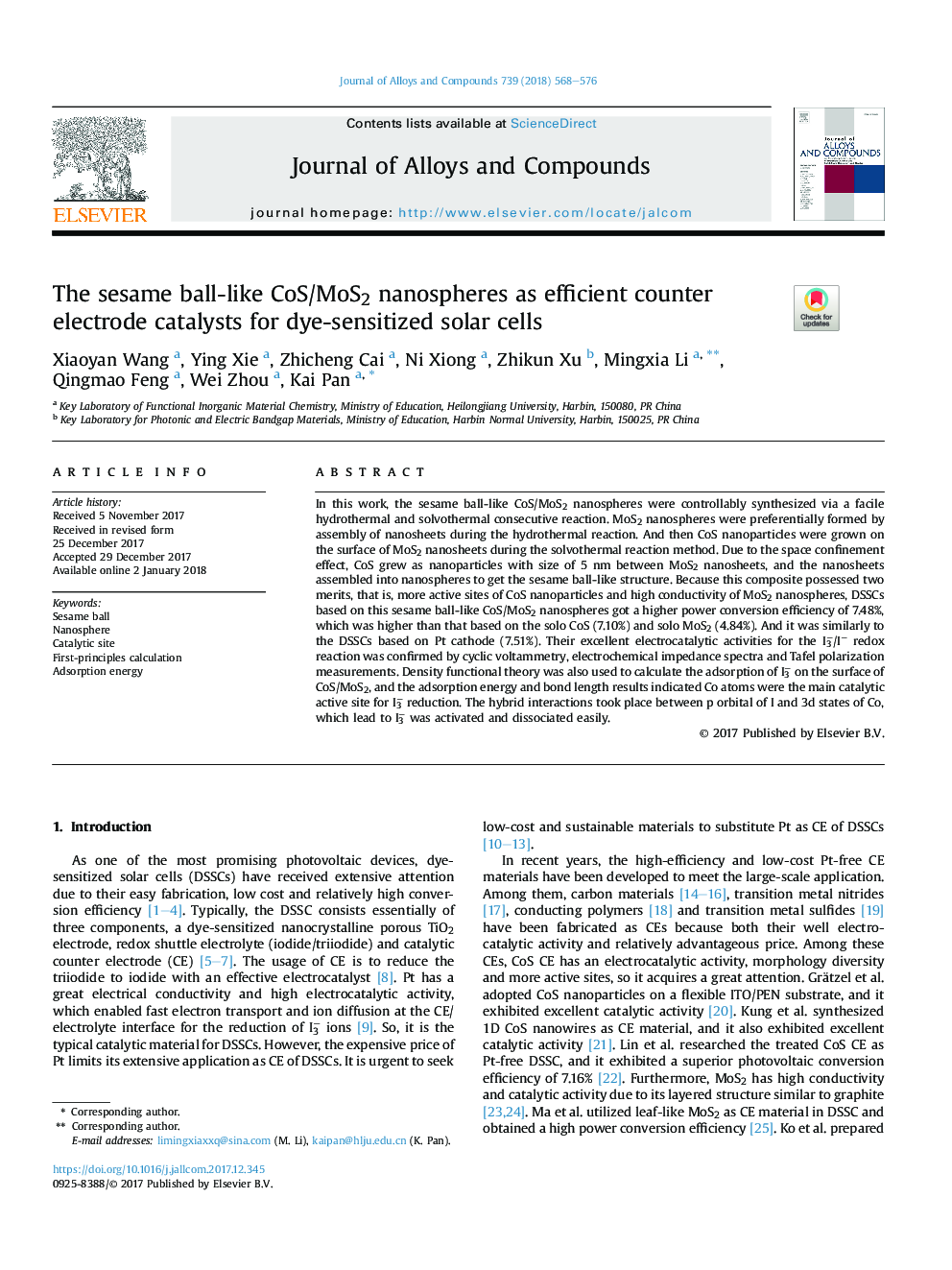| Article ID | Journal | Published Year | Pages | File Type |
|---|---|---|---|---|
| 7994108 | Journal of Alloys and Compounds | 2018 | 9 Pages |
Abstract
In this work, the sesame ball-like CoS/MoS2 nanospheres were controllably synthesized via a facile hydrothermal and solvothermal consecutive reaction. MoS2 nanospheres were preferentially formed by assembly of nanosheets during the hydrothermal reaction. And then CoS nanoparticles were grown on the surface of MoS2 nanosheets during the solvothermal reaction method. Due to the space confinement effect, CoS grew as nanoparticles with size of 5Â nm between MoS2 nanosheets, and the nanosheets assembled into nanospheres to get the sesame ball-like structure. Because this composite possessed two merits, that is, more active sites of CoS nanoparticles and high conductivity of MoS2 nanospheres, DSSCs based on this sesame ball-like CoS/MoS2 nanospheres got a higher power conversion efficiency of 7.48%, which was higher than that based on the solo CoS (7.10%) and solo MoS2 (4.84%). And it was similarly to the DSSCs based on Pt cathode (7.51%). Their excellent electrocatalytic activities for the I3â/Iâ redox reaction was confirmed by cyclic voltammetry, electrochemical impedance spectra and Tafel polarization measurements. Density functional theory was also used to calculate the adsorption of I3â on the surface of CoS/MoS2, and the adsorption energy and bond length results indicated Co atoms were the main catalytic active site for I3â reduction. The hybrid interactions took place between p orbital of I and 3d states of Co, which lead to I3â was activated and dissociated easily.
Related Topics
Physical Sciences and Engineering
Materials Science
Metals and Alloys
Authors
Xiaoyan Wang, Ying Xie, Zhicheng Cai, Ni Xiong, Zhikun Xu, Mingxia Li, Qingmao Feng, Wei Zhou, Kai Pan,
